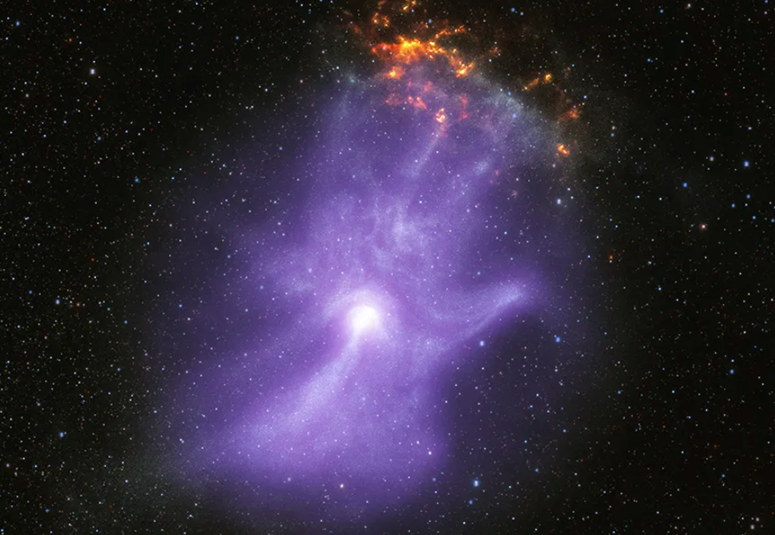Une main cosmique fantomatique dévoilée par des télescopes de la NASA

Une explosion stellaire avec la forme d’une main « fantôme » a été capturée par le tout nouveau télescope à rayons X de la NASA, l'Imaging X-ray Polarimetry Explorer (IXPE).
Voici la nébuleuse du vent pulsar « MSH 15-52 ». À 16 000 années-lumière de nous, elle abrite l’étoile pulsar « PSR B1509-58 », observée pour la première fois en 2001 par l’Observatoire rayon X Chandra de la NASA. « Nous connaissons tous les rayons X en tant qu’outil de diagnostic médical pour les humains. Ici, nous utilisons les rayons X d’une manière différente, mais ils révèlent à nouveau des informations qui nous sont autrement cachées » a déclaré Josephine Wong, co-auteur de l’étude, de l’université Stanford en Californie.

Une nébuleuse du vent du pulsar
Ghostly cosmic hand revealed by NASA telescopes
A stellar explosion in the shape of a "ghost" hand has been captured by NASA's newest X-ray telescope, the Imaging X-ray Polarimetry Explorer (IXPE).
This is the pulsar wind nebula “MSH 15-52”. 16,000 light years away, it is home to the pulsar star "PSR B1509-58", first observed in 2001 by NASA's Chandra X-ray Observatory. “We are all familiar with X-rays as a medical diagnostic tool for humans. Here we use X-rays in a different way, but they again reveal information that is otherwise hidden from us,” said study co-author Josephine Wong of Stanford University in California.

A pulsar wind nebula
Pulsars, rotating neutron stars producing a periodic pulsation, send powerful beams of matter and antimatter from their poles. These jets thus create cosmic bursts, called “pulsar wind nebulae”. This is how a pulsar wind nebula in the shape of a ghostly skeleton's hand took shape around the pulsar star PSR B1509-58.
Fortunately, NASA telescopes were there to capture this wonderful phenomenon. “We discovered the life history of super energetic matter and antimatter particles around the pulsar. This teaches us how pulsars can act as particle accelerators,” said Niccolò Di Lalla, from Stanford University in California, co-author of the study.
NASA's new IXPE telescope managed to capture this enigmatic "ghost hand" through an observation that lasted 17 days. “The charged particles producing the California, who led the study. The photograph was unveiled during Halloween festivities.
Source: websites

